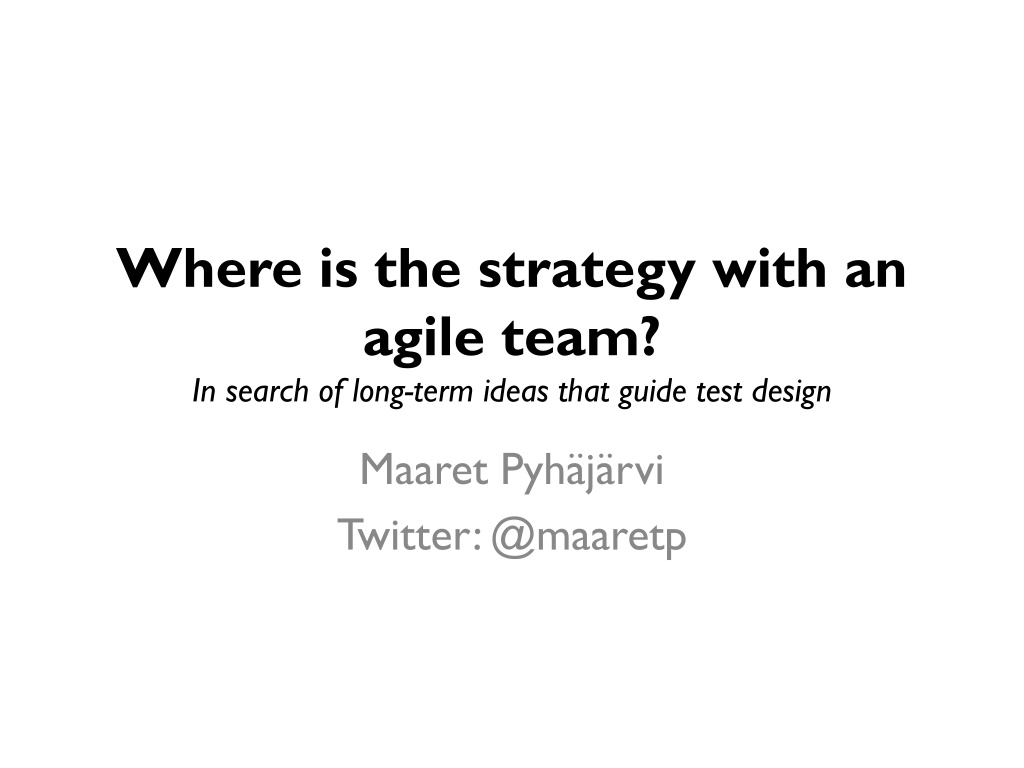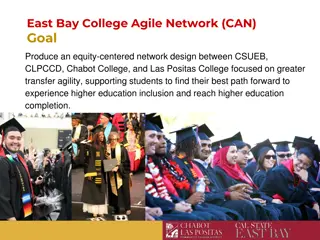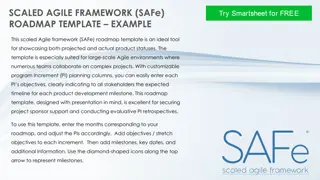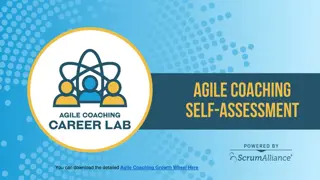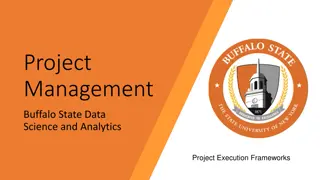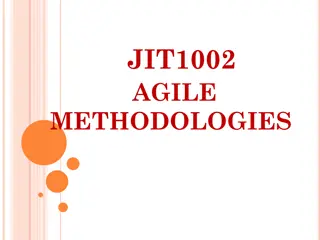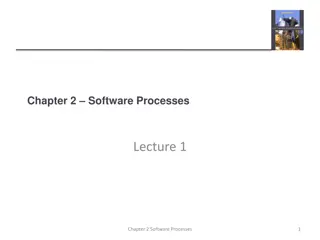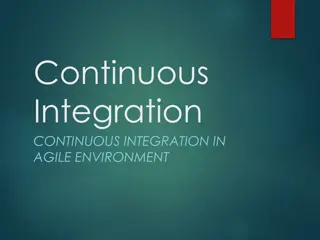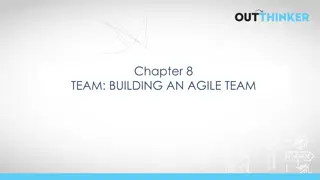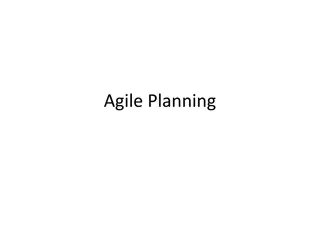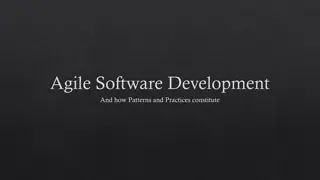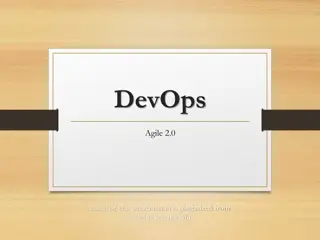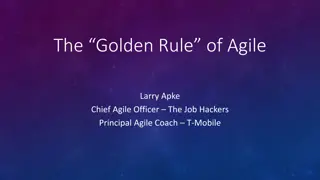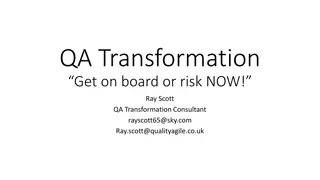Strategies for Long-Term Test Design with Agile Teams
Exploring strategies for guiding test design with agile teams, focusing on long-term ideas and insights shared by Maaret Pyhäjärvi. Topics covered include testing in agile teams, aligning testing with product development, and key observations from real-world experiences. Emphasis is placed on continuous deployment, tactical approaches for efficient testing, and the importance of knowing the product and identifying slices of value for testing. Supporting documentation, testing techniques, and monitoring in production are also highlighted.
Download Presentation

Please find below an Image/Link to download the presentation.
The content on the website is provided AS IS for your information and personal use only. It may not be sold, licensed, or shared on other websites without obtaining consent from the author.If you encounter any issues during the download, it is possible that the publisher has removed the file from their server.
You are allowed to download the files provided on this website for personal or commercial use, subject to the condition that they are used lawfully. All files are the property of their respective owners.
The content on the website is provided AS IS for your information and personal use only. It may not be sold, licensed, or shared on other websites without obtaining consent from the author.
E N D
Presentation Transcript
Where is the strategy with an agile team? In search of long-term ideas that guide test design Maaret Pyh j rvi Twitter: @maaretp
Atypical Agile Team Product Development Team of 9 (1 testing specialist) + PO Release in production when done (includes tested) Continuous Deployment with little test automation Kanban with conversational WIP limits NoEstimates, focus on identifying slices of value NoProjects Testing = Checking + Exploring
Ideas that Guide All Testing Knowing the product (by asking around) Purpose of existence Functionality, Performance Browsers, .NET MVC Choosing the right features into development pipeline (lean startup) Delivering professionally Done means done value in use delivered Production monitoring is an option for getting information Reporting on product (Lead time; Net Promoter Score) not on testing Actionable information first Awareness of reporting time Strategy should be more specific to the product at hand?
Supporting Documents Quality Target Awareness thing Outlining rough types of testing with split to roles System Testing Support List Feature Breakdown Connections in the system between the features Elisabeth Hendrickson s cheat sheet
What Really Happens Split Jira item into smallest possible testable chunk; talk about value and design (dev-test-po) Implement & Pair-test to introduce to testing specialist Explore sympathetically and extending as long as needed Feature in isolation, split to browsers starting from most likely to break Feature in combination with other features Monitoring in production Get better (scope of test automation; refactoring; pairing and group work; individuals skills)
Key Observations from the Experience CONTINUOUS DEPLOYMENT IS TESTING GAME-CHANGER Continuous deployment allows for applying indefinite time on selected tactics, so the prioritizing of the next tactic to use is on selecting the next move that reveals information that is immediately useful TACTICS OVER STRATEGY FOR TESTING There s so much commonality on things to do in testing of different projects that strategic ideas seem almost invisible, and the focus on is applying the right tactics to reveal the right information more efficiently and timely. TEMPORARY AND TACTICAL AIDS FOR AGREEING AND REMEMBERING Two documents have seemed relevant in the lifecycle of this product: a quality target agreeing who does what kinds of testing activities and a feature breakdown to remind of connections in the system between the features STRATEGY IS ENABLING TESTING IN PRODUCT DEVELOPMENT Most of strategic effort goes into software development in general: shortening the feedback cycle to enable flexibility and relevance of testing and building in testing from the inception of a feature idea, driving through feature splitting to the ideas of tactics we d apply on a particular feature.
